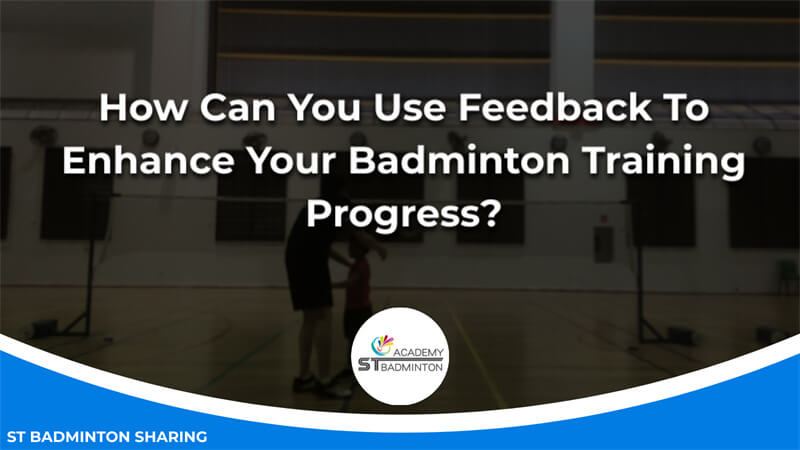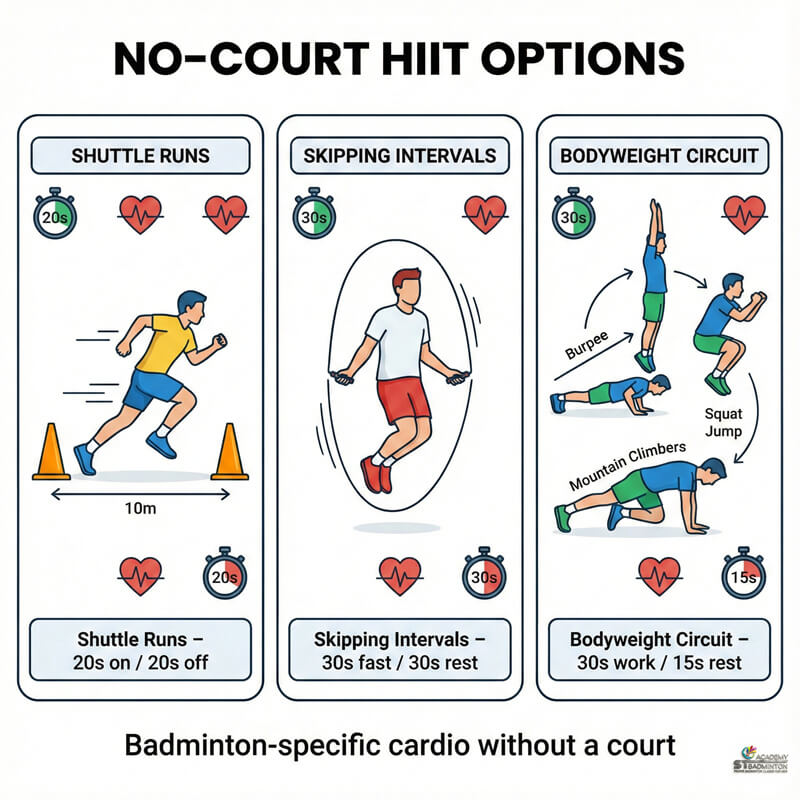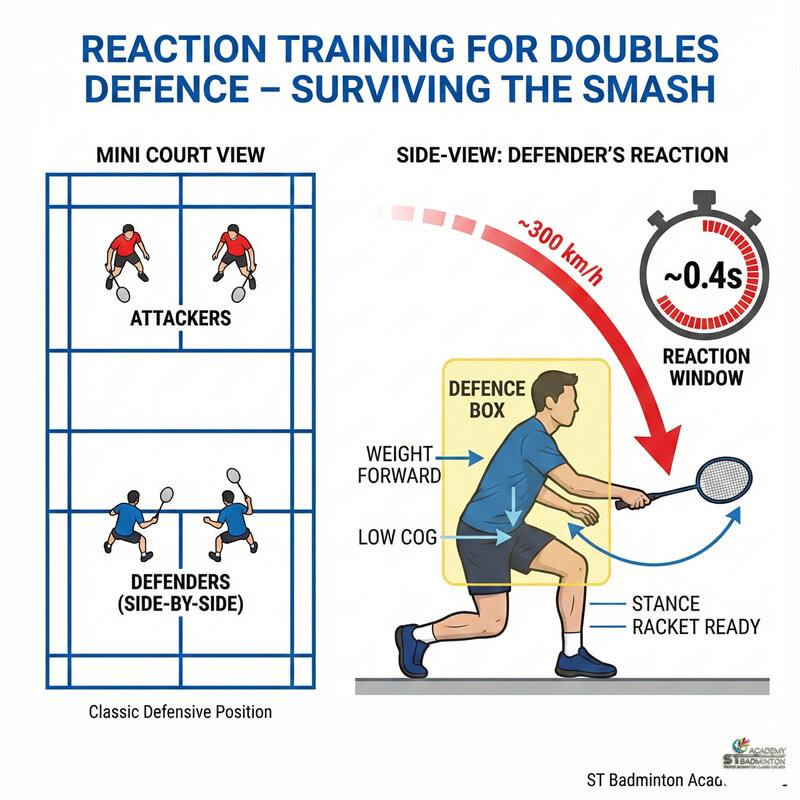Welcome to ST Badminton Academy’s badminton training in Malaysia! I’m often asked how feedback can be used to enhance the progress of an athlete’s training. Today, I’ll provide you with some useful tips that will help you make the most out of your badminton practice and ultimately improve your game!
Feedback is one of the most powerful tools we have as athletes; it allows us to identify our strengths and weaknesses in order to develop targeted strategies for improvement. Whether it comes from coaches, mentors, or even yourself – feedback can provide valuable insight into where we need to focus our energy in order to reach our goals. In this article, I’ll explain exactly how you can use constructive criticism effectively in your next badminton session – so let’s get started!
Understanding The Benefits Of Feedback
As a badminton training expert, I’m often asked by fellow players how to enhance their progress and become better at the game. My answer is always the same: get as much feedback on your performance as possible! That’s right – no matter what level of player you are, analyzing mistakes and seeking advice can be invaluable when it comes to improving your technique and pushing yourself further during games.
Feedback from peers or coaches can provide important insights into how well (or not!) you’re doing in certain areas such as footwork, power shots, and decision-making. It also helps you identify any weak spots and allows for more focused practice sessions that build up those skills over time. For example, if you receive feedback about your lack of stamina, then this will help inform decisions regarding which drills to focus on most heavily, ensuring maximum improvement with each session.
In addition to providing guidance on specific techniques, good quality feedback also encourages personal growth through self-reflection. Taking the time to evaluate your own performance enables you to develop a deeper understanding of the game and its nuances – something that translates into tangible improvements out on court. So don’t shy away from getting feedback; use it instead as an opportunity to find out where you need work, set smart goals for yourself, and refine your playstyle even further!
Setting Smart Training Goals
Having discussed the benefits of feedback for improving badminton training progress, let’s move on to setting SMART goals. Achieving success in any field requires focus and dedication – this is especially true when it comes to sport-specific performance. Identifying weaknesses and strengths through constructive feedback helps you create tangible objectives that are tailored to your specific needs.
When creating a set of SMART goals for badminton practice, make sure they’re Specific, Measurable, Attainable, Relevant, and Timely. It’s important to keep track of both short-term milestones as well as long-term objectives so that you can gauge your overall improvement over time. For example, if you have identified weak footwork as an area to improve upon, then one shorter-term goal could be increasing the speed at which you complete a certain drill by 10% within two weeks; while a longer-term objective might involve mastering more complex types of footwork patterns without sacrificing accuracy or power.
Creating achievable targets will help ensure better adherence to the plan since each step along the way leads you closer to achieving ultimate success. Planning also allows us to anticipate potential obstacles and devise strategies ahead of time should we encounter them during our journey – this brings us closer to developing an effective training plan!
Developing An Effective Training Plan
It’s important to set goals when developing an effective training plan for badminton. Establishing a schedule that allows you to focus on both long-term and short-term objectives is key. You can use feedback from coaches and other players to adjust your plan as needed and stay on track. And don’t forget to factor in rest and recovery time to enhance your progress!
Setting Goals
Setting goals is an essential part of any effective badminton training plan. It’s important to have a clear idea of what you want to achieve and how long it will take before you can even start thinking about the specifics of your training. Tracking milestones, monitoring performance, and using feedback are key components for setting achievable goals that provide structure and motivation. This process starts by breaking down big objectives into smaller ones that can be more easily accomplished in shorter timeframes.
For example, if you want to improve your footwork skills within three months then set monthly or weekly targets that help you progress towards this goal – such as practicing correct positioning during drills and focusing on speed while performing those drills. Utilizing feedback from coaches or other players helps identify areas where improvements need to be made so you can adjust accordingly and remain focused on achieving your desired results. Ultimately, setting goals provides direction and focus which allows us to ensure our hard work pays off!
Establishing A Schedule
Once you have established your goals, the next step is to create a schedule and structure drills that will help you meet them. Creating an effective badminton training plan requires hard work, focus, and dedication but with the right approach, it can be rewarding. Structuring drills in a way that helps track trends and measure progress toward long-term objectives allows for more efficient use of time and resources.
This means not just focusing on improving skillsets, but also tracking how those improvements are impacting performance during both practice sessions and matches. Fitting all this into a regular routine takes discipline, so having realistic expectations and being flexible when needed is essential for success. With careful planning, one can develop a sustainable workout regime that keeps them motivated as they strive to reach their desired results!
Utilizing Video Analysis
If badminton training progress was compared to the flight of a bird, then video analysis would be its wings. Video streaming enables players to take off in their learning journey by capturing an instant snapshot of how they perform on the court and gaining valuable insights into what works best for them. As such, utilizing game analysis can help enhance badminton training progress like no other tool.
To make the most out of this opportunity,
| Here is what one should consider: |
|---|
| 1. Analyzing mechanics: |
| – Identify areas that need improvement or adjustments during practice sessions by analyzing form and technique through slow-motion replays and frame-by-frame evaluations. |
| 2. Studying strategy: |
| – Develop new strategies by studying opponents’ playing styles and analyzing changes among different opponents. This helps improve efficiency in each shot played and enhances overall gameplay. |
| 3. Tracking performance: |
| – Track individual shots from every match and review overall trends across multiple matches to quickly recognize patterns. This allows you to focus on areas where optimization will have the greatest impact, leading to continuous improvement in your badminton performance. |
Video analysis provides an effective way for players to observe themselves objectively, enabling them to measure their own growth as well as gain meaningful feedback for future development without relying solely on external sources. Therefore, it is essential for any aspiring player looking to achieve success with their badminton training program. With these tools at hand, there is nothing stopping anyone from reaching peak performance levels!
Collecting Data For Self-Assessment
Collecting data is an important part of being able to measure and track your progress in badminton. It’s essential to note the small details, such as how fast you can move around the court or how accurate your shots are. By recording this information regularly and accurately, you’ll be able to gain a better understanding of what areas need improvement and where your strengths lie.
My advice is to document everything during practice, including strokes, footwork drills, and even warm-up exercises. This way, you’ll have an objective record of your performance that will allow you to measure improvement over time. You should also remember to log any changes made so that it’s easier for you to assess their effectiveness later on.
It’s also useful to take notes after each session so that you can reflect on what worked well and which areas were more challenging. Doing this will help you identify trends in your play; plus it gives you valuable insight into making timely adjustments going forward. To sum up, collecting data is key when tracking progress in badminton training – use it wisely! With this knowledge under our belt, let’s move on to creating a positive learning environment…
Creating A Positive Learning Environment
I believe that fostering open communication is key to creating a positive learning environment in badminton training. Utilizing feedback to encourage dialogue between the coach and the student will help the student understand their strengths and weaknesses. Positive reinforcement should also be used to motivate and inspire the student to push themselves and reach their full potential. By providing honest, constructive feedback, the student can use it to help guide their progress and reach their goals.
Fostering Open Communication
Creating a positive learning environment is essential for fostering open communication and bridging gaps in badminton training. I believe that team-building activities are essential to encourage an atmosphere of collaboration, which will build trust between teammates and create an effective dialogue that can be used to help each other improve. As a badminton trainer, it’s important to instill this kind of attitude among the players; they should feel comfortable talking with their coach or teammates about any issues or feedback they have on their performance.
This helps ensure everyone receives honest advice from others so they can continue making strides during their journey as badminton players. In addition, by creating an open forum where people can freely share ideas and opinions without judgment, we create a space where everyone feels listened to and appreciated – something all athletes need in order to reach their goals. Ultimately, these steps make sure your badminton training sessions remain positive, informative, and beneficial for everyone involved!
Encouraging Positive Reinforcement
When it comes to fostering a positive learning environment, encouraging positive reinforcement is key. As an expert in badminton training, I understand the importance of building confidence and reinforcing accountability among players. By providing frequent recognition for successes and milestones achieved during practice, we can create an atmosphere that celebrates improvement and keeps spirits high.
Additionally, offering words of encouragement or helpful advice when needed will help build trust with those you train and keep them motivated on their journey as athletes. It’s important to remember too that everyone learns at their own pace; some may take longer than others so don’t be discouraged if progress isn’t immediate – instead celebrate every small victory! Achieving success together not only builds camaraderie but also helps improve performance overall. The bottom line is this: Positive reinforcement goes a long way in creating a healthy and productive learning environment – one where all participants feel respected, valued, and heard.
Seeking Feedback From Coaches And Mentors
As a badminton training expert, I always recommend seeking advice from coaches and mentors as part of your journey to enhance training progress. It’s important to recognize that there is no substitute for having someone experienced guide you on the path ahead. Not only can they provide clear direction and offer insights into how to approach situations, but also help create an environment where you can share experiences with other players and see things from their perspective.
The best way to get feedback during your badminton training is by engaging in meaningful conversations with coaches or mentors about your performance in practice sessions or tournaments. Make it a point to ask questions about what areas could be improved upon and ways to increase confidence when playing against opponents.
Having honest discussions will ensure that everyone involved has a better understanding of each other’s playing styles and limits so that appropriate strategies can be put in place accordingly.
By taking advantage of this opportunity, badminton players are able to gain valuable insight into their strengths and weaknesses which will ultimately lead them towards positive changes over time. From here, we can move forward toward using performance reviews to track progress more effectively moving forward.
Using Performance Reviews To Track Progress
I was playing badminton with my friends and I noticed that, despite our efforts to improve, we were still making the same mistakes. To help us gain better results from our training sessions, I decided to implement performance reviews into our practice routine.
Performance reviews are a great way to monitor progress as they provide an objective view of how well each player is doing. They can also identify areas for improvement in terms of game strategy and technique. With this knowledge, players can work on improving their weaknesses and refine their strengths to become better overall badminton players.
Using performance reviews has been essential in helping me and my friends reach new levels in our badminton training journeys.
| Here are five important ways it helps: |
|---|
| 1. Helps track progress over time: |
| – Performance reviews assist in monitoring and tracking progress throughout your badminton training journey. |
| 2. Identifies weak spots: |
| – By analyzing performance, you can identify areas of weakness and focus on targeted improvement in your badminton skills. |
| 3. Allows more effective goal setting: |
| – Performance reviews provide insights that contribute to more effective goal setting, allowing you to set realistic and achievable targets in your training. |
| 4. Encourages self-assessment & evaluation: |
| – Regular reviews encourage self-assessment and evaluation, fostering a deeper understanding of your strengths and areas that need development in badminton. |
| 5. Provides valuable feedback: |
| – The feedback obtained from performance reviews is valuable for making informed adjustments and improvements to your training regimen. |
Frequently Asked Questions

What Is The Best Way To Practice Badminton?
If you want to become a better badminton player, the best way to practice is by focusing on both physical and mental aspects. Incorporate strength training into your routine to help build up muscles that are essential for quick movements and agility during gameplay. Also, be sure to focus on mental preparation in order to increase concentration and focus when playing. By doing so, you’ll have all of the tools necessary to maximize your momentum and progress as a badminton player.
How Can I Get Access To A Badminton Coach?
If you’re looking to take your badminton game up a notch, nothing beats having an experienced coach by your side. A good coach can help you develop strength training and mental preparation techniques that will improve your overall performance on the court.
I’ve seen firsthand how beneficial it is for players of any skill level to have someone knowledgeable guiding them along their journey. From my experience as a badminton training expert, I always recommend finding a qualified coach who understands your individual needs and goals in order to get the most out of every practice session.
What Equipment Do I Need To Play Badminton?
Playing badminton is a great way to improve your physical fitness and have fun, but there are a few pieces of equipment that you need in order to get started. The court layout should include two opposite sides separated by a net at least 5 feet high. Additionally, having the right racket selection can improve your game; look for one made of graphite or aluminum and make sure it has a comfortable grip size. With these basics in place, you’ll be ready to start playing! Other than choosing a good racket and also remember to choose the best racket restring in Malaysia.
How Often Should I Be Playing Badminton?
It’s no surprise that badminton is a sport that requires regular practice to improve your skills. But how often should you be playing? Well, it all depends on your strategic planning and tactical analysis; if you’re serious about improving your game then the more regularly you play, the better! That said, I would recommend not only playing at least twice a week but also breaking down each session into specific drills to focus on key areas of improvement – this way you can measure progress and use feedback to enhance your training even further.
What Are The Best Drills For Improving Badminton Skills?
If you want to improve your badminton skills, drills are a great way to do so. The best drills involve analyzing technique, as well as mental preparation; this helps you become more aware of what needs improvement and can help you stay focused during practice.
Practicing specific shots like clears or smashes repeatedly is also essential for improving your form and accuracy. Additionally, make sure to get feedback from an experienced coach or player who can give you tips on how to further refine your game.
Learn Badminton with Proper Training Progress in Malaysia
Badminton is a great game for both exercise and competition, but it does require dedication. If you’re looking to improve your badminton skills quickly, one of the most effective methods is to get feedback from an experienced coach. On average, professional badminton players receive feedback after every practice session or match. By incorporating this kind of feedback into your training routine, you can rapidly enhance your progress in improving your badminton performance.
Not only will good quality feedback help you better understand what techniques work best for you, but it may also provide helpful insights into how different styles of play are used by other skilled badminton players.
Even if you don’t have access to a full-time coach, there are numerous online resources where you can find tips and advice on how to become better at the game. With some commitment and effort, feedback should be able to help anyone take their badminton playing skills up a notch!





